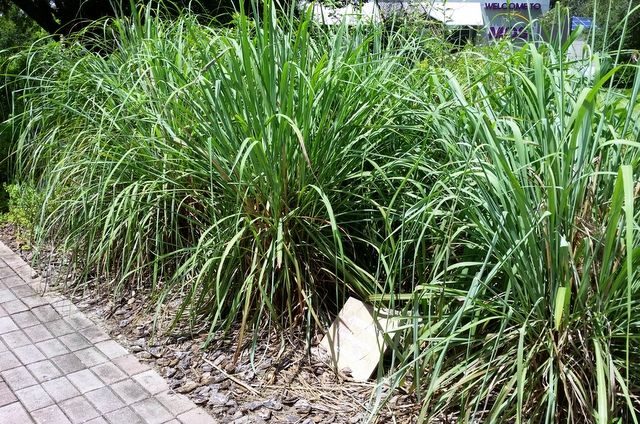Growing Lemongrass
Updated: Apr. 24, 2020
Grow lemongrass for culinary purposes, as an ornamental grass, or just for the fresh scent!
Much as I love beautiful flowers in the garden, I’m also known to keep plants around just for “smelling purposes”. I love fragrant foliage like mint, rosemary, and bee balm that gives off a lovely scent when you brush it on the way past. I have a special weakness for citrus-scented plants, like lemon balm, orange mint, and especially lemongrass. Lemongrass has the added benefit of being a beautiful ornamental grass, with lots of culinary applications. Though it’s a tropical frost-tender species, it can be enjoyed in most gardens as an annual or wintered over inside with some special precautions. Find starter plants at your local nursery, or visit a market specializing in Asian cuisine for fresh stems that can be rooted.
Lemongrass (Cymbopogon citratus) is native to southeast Asia and is an evergreen perennial in zones 10 and higher. In zones 9 and 10, it may be damaged by frost or even killed to the ground by a freeze, but usually returns from the roots in the spring. In these zones, plant outdoors in a sunny spot and give it plenty of room – this plant takes off when the heat of summer arrives and can grow to 5 feet by 5 feet in just a few months. Well-drained loamy soil is best, but it thrives in the sandy soil here in Tampa, so don’t be afraid to experiment.
Further north, you’ll need to bring lemongrass indoors before the first frost. If you grow it in a pot, simply move it into a warm sunny location for the winter. If you grow it in the ground, you’ll need to dig up some small clumps (get great step-by-step instructions here). In either case, be prepared to water it well during the winter. It may not look fantastic while being kept indoors, but should bounce back once planted outside next spring.
Lemongrass is wonderful for cooking, and many southeastern Asian cuisines use it extensively. For cooking, harvest lemongrass at the bulbous area where the stem meets the ground. Lemongrass stems freeze well, so feel free to harvest it all at the end of the growing season to save for the winter ahead. (Get complete details on harvesting and cooking with lemongrass by clicking here.) You can also dry the long leaves and use them in tea. Do you grow lemongrass? Tell us about your experiences!
